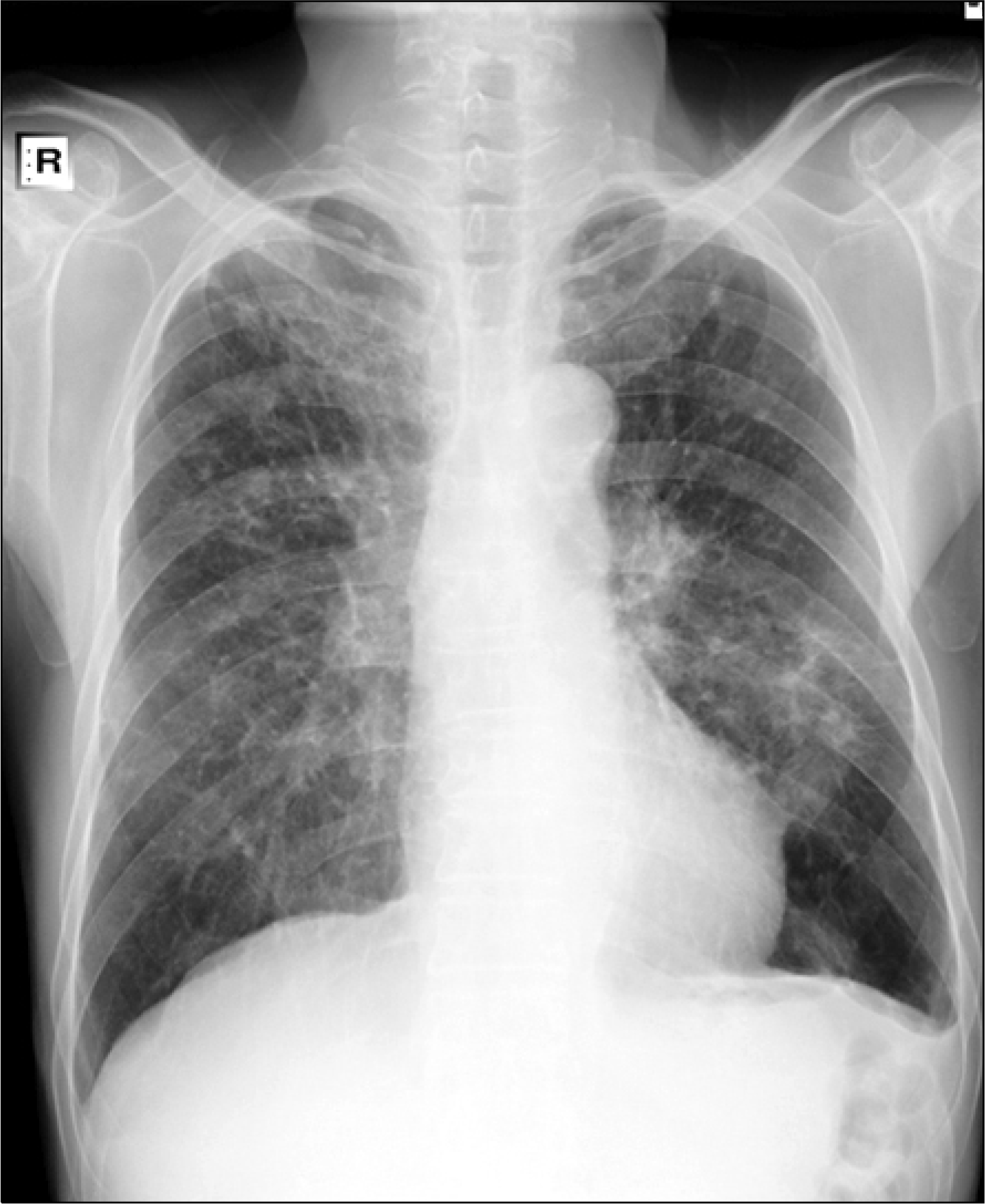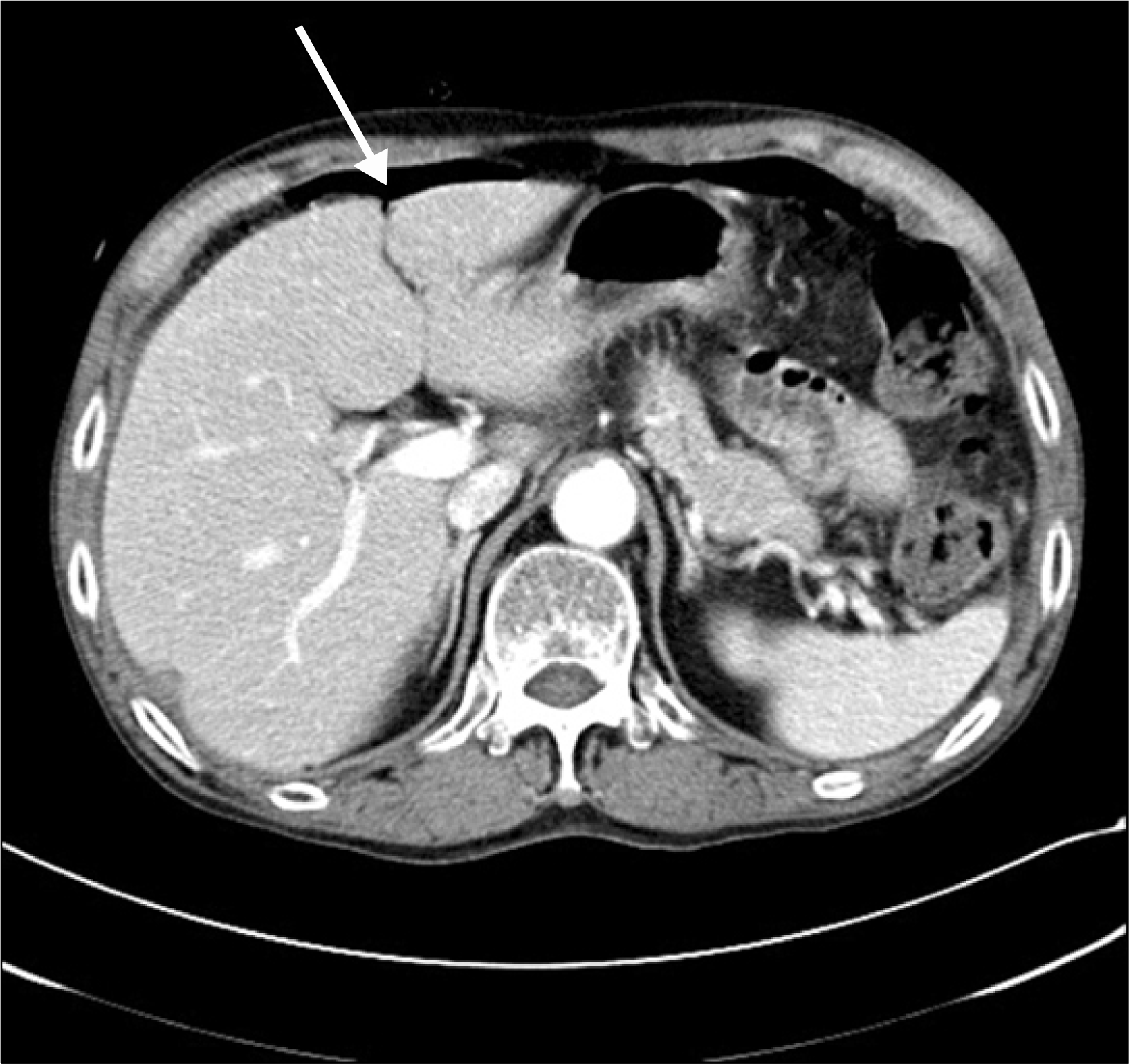Abstract
Churg-Strauss syndrome is a rare systemic disorder characterized by asthma, eosionphilia and necrotizing vasculitis affecting small-to-medium-sized vessels. Although it is frequently associated with gastrointestinal mucosal lesions, recurrent bowel perforation is rare and potentially life threatening. We report a case of a 66-year-old man with Churg-Strauss syndrome, who presented with recurrent small bowel perforation. He was admitted with abdominal pain developed previous night, who had a previous small bowel perforation history treated with laparoscopic closure 5 months ago. Laboratory data showed remarkable eosinophilia. Physical examination indicated positive signs of peritoneal irritation in the entire abdomen, and abdominal computed tomography scanning showed edematous small bowel with intra-abdominal free air, suggesting intestinal perforation. He underwent laparoscopic small bowel closure and was treated with steroid.
REFERENCES
1). Churg J., Strauss L. Allergic granulomatosis, allergic angiitis, and periarteritis nodosa. Am J Pathol. 1951. 27:277–301.
2). Chumbley LC., Harrison EG Jr., DeRemee RA. Allergic granulomatosis and angiitis (Churg-strauss syndrome). Report and analysis of 30 cases. Mayo Clin Proc. 1977. 52:477–84.
3). Guillevin L., Lhote F., Gayraud M., Cohen P., Jarrousse B., Lortholary O, et al. Prognostic factors in polyarteritis nodosa and Churg-Strauss syndrome. A prospective study in 342 patients. Medicine (Baltimore). 1996. 75:17–28.

4). Harper L., Savage CO. Pathogenesis of ANCA-associated systemic vasculitis. J Pathol. 2000. 190:349–59.

5). Vaglio A., Martorana D., Maggiore U., Grasselli C., Zanetti A., Pesci A, et al. HLA-DRB4 as a genetic risk factor for Churg-Strauss syndrome. Arthritis Rheum. 2007. 56:3159–66.

6). Sinico RA., Di Toma L., Maggiore U., Bottero P., Radice A., Tosoni C, et al. Prevalence and clinical significance of antineutrophil cytoplasmic antibodies in Churg-Strauss syndrome. Arthritis Rheum. 2005. 52:2926–35.

7). Lanham JG., Elkon KB., Pusey CD., Hughes GR. Systemic vasculitis with asthma and eosinophilia: a clinical approach to the Churg-Strauss syndrome. Medicine (Baltimore). 1984. 63:65–81.
8). Sharma MC., Safaya R., Sidhu BS. Perforation of small intestine caused by Churg-Strauss syndrome. J Clin Gastroenterol. 1996. 23:232–5.

9). Murakami S., Misumi M., Sakata H., Hirayama R., Kubojima Y., Nomura K, et al. Churg-Strauss syndrome manifesting as perforation of the small intestine: report of a case. Surg Today. 2004. 34:788–92.

10). Park JH., Jung YS., Kim YK., Lee YM., Hwang JH., Kim KU, et al. A case of Churg-Strauss syndrome with Interstinal Perforation. Tuberc Respir Dis. 2009. 66:374–9.

12). Nakamura Y., Sakurai Y., Matsubara T., Nagai T., Fukaya S., Imazu H, et al. Multiple perforated ulcers of the small intestine associated with allergic granulomatous angiitis: report of a case. Surg Today. 2002. 32:541–6.





 PDF
PDF ePub
ePub Citation
Citation Print
Print




 XML Download
XML Download